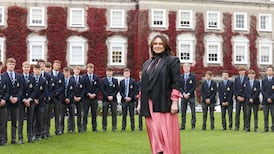ANALYSIS:Even as Russia acknowledged Soviet responsibility for the 1940 murders of 22,000 Poles, controversy surrounded how the information emerged, writes CONOR O'CLERY
WHEN MIKHAIL Gorbachev became leader of the Soviet Union in 1985, it was the Kremlin’s practice to blame the Germans for carrying out the mass killings of Polish officers at Katyn in 1940.
On April 13th, 1990, the 47th anniversary of the discovery of the mass graves, the Soviet leader expressed profound regret to Poland for Stalin’s “heinous crime”. By then, exhumation of bodies at Katyn and other factors had provided evidence the killings were carried out by Stalin’s secret police, not the Nazis.
It wasn't until 20 months later that president Gorbachev produced the evidence in documentary form. On December 23rd, 1991, two days before he resigned and the Soviet Union ceased to exist, he passed the Archives of the General Secretaryto Russian president Boris Yeltsin in his Kremlin office.
Known to top Soviet officials as the “Stalinski arkivi”, the huge collection contained secret documents passed on by Kremlin leaders from the time of the founding of the USSR in 1917.
Gorbachev told Yeltsin and his adviser Alexander Yakovlev that there was one top secret file they should inspect first. He fetched it and read aloud to Yeltsin and Yakovlev a memo dated March 5th, 1940, from Lavrenty Beria, head of Stalin’s secret police, the NKVD, recommending execution of 25,700 Polish prisoners in Katyn forest near Smolensk in 1940. It carried the Politburo signatures of Stalin, Molotov, Mikoyan and Voroshilov.
He also read out a deposition from Alexander Shelepin, who as head of the KGB in 1959 gave the total number of Polish victims shot on Stalin’s orders in 1940 as 21,857, and who proposed to Khrushchev the destruction of all incriminating documents.
Alexander Yakovlev listened in anger. He had been seeking these papers as chairman of an official Russian Commission for the Rehabilitation of Victims of Political Repression. He concluded that Gorbachev knew all along about the existence of the documents.“Gorbachev in my presence gave Yeltsin the package with all the documents on Katyn [and] when the envelope was opened, it turned out that they were notes about the shooting of Polish military and civilians,” Yakovlev wrote later. “Time and time again I [had] asked . . . which documents are in the politburo archives regarding this, and I got the same response each time – there is nothing.”
Yakovlev said he was bewildered at the apparent withholding of the documents. “Gorbachev would have gained politically and morally if he made them public.”Gorbachev wrote in his memoirs he had only received the documents the previous evening. “It took my breath away to read this hellish paper, which condemned to death thousands of people at a single stroke.”
His former chief of staff Valery Boldin claimed later that he had shown the papers to Gorbachev almost three years earlier, and that he had told him not to show them to anyone else, saying: “This is a hanging matter.”
Archive annotations revealed that in April 1989, Boldin, as Gorbachev’s aide, opened the file containing the politburo order to shoot the Poles, and Gorbachev had had access to the contents.
Gorbachev’s foreign policy adviser Anatoly Chernyaev took the view that Boldin was trying to discredit Gorbachev and he doubted he ever did see the execution command.
The three men in Gorbachev’s office agreed the “smoking gun” documents would have to be delivered to the Poles. The next year, president Yeltsin personally gave the Soviet documents to Polish president Lech Walesa.
Conor O’Clery is writing a book on the last days of the Soviet Union







